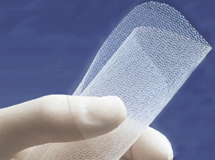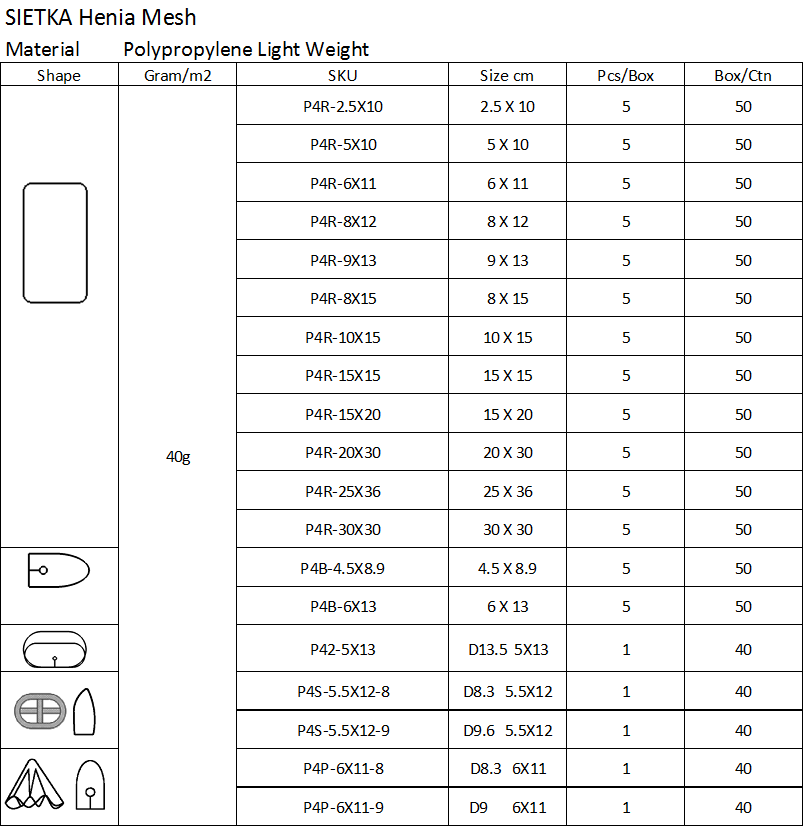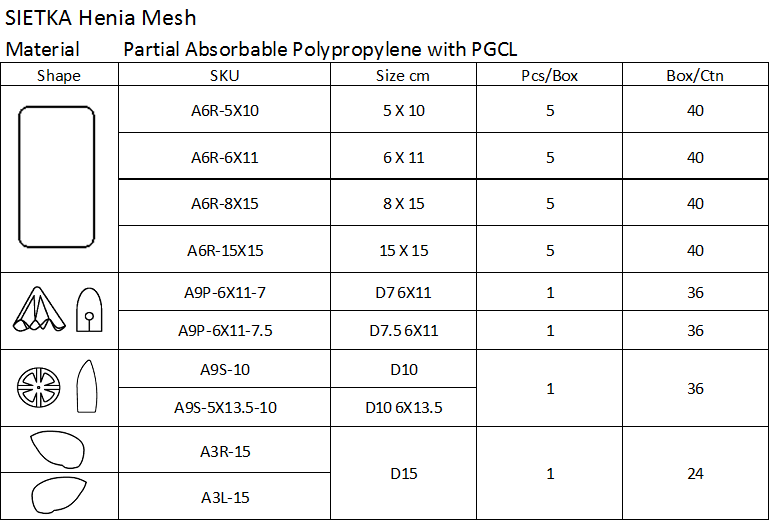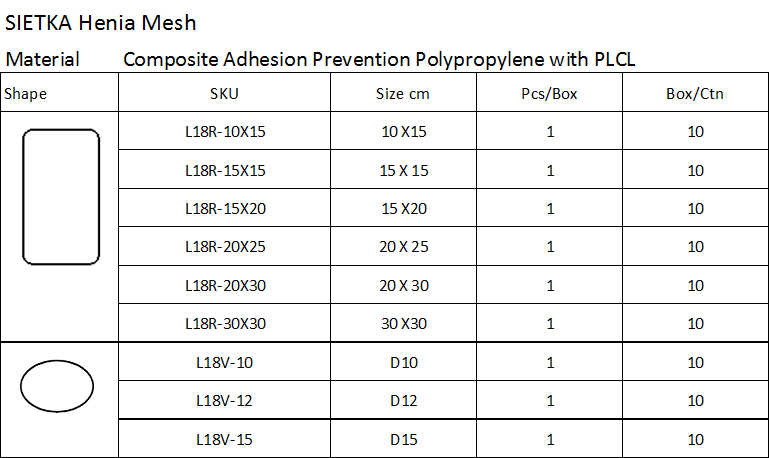


 Hernia mesh
Hernia mesh
SIETKA™ - POLYPROPYLENE HERNIA MESH
Non Absorbable, Polypropylene mesh.
For the Repair of Hernia and Other Deficiencies in the Fascia.
 Advantages
Advantages

 European Market Trend
European Market Trend
 Hernia
Hernia
A hernia is a protrusion of an organ (or part of an organ) through its containing wall. Before a hernia can form, there must be a weakness at the containing wall (commonly of abdominal muscles). The weakness may be congenital or it may be acquired.
At the site of a hernia, a bulge is noticeable, that can contain fat, intestine or other tissue. This bulge can be either reducible, meaning that the fat or tissue can be pushed back into the abdominal cavity and the hernia will flatten and disappear, or non-reducible, which means the fat or tissue cannot be pushed back into the abdomen and the hernia will not flatten.
In the latter situation the risk of strangulation occurs, which can lead for instance to constipation, blood in the stool, fever, vomiting or shock. These symptoms require immediate medical attention.
 Hernias are classified as follows:
Hernias are classified as follows:
Inguinal Hernia.
Occurs in the groin (area between the abdomen and the thigh). It is called "inguinal" because the intestines push through a weak spot in the inguinal canal, which is a triangle-shaped opening between layers of abdominal muscle near the groin.
Epigastric Hernia.
A linear Alba hernia protrudes anywhere between the xiphoid process and the umbilicus, but usually in the mid line between these two structures.
Umbilical Hernia.
An umbilical hernia is a small hole in the abdominal wall at the umbilicus (belly button).
Femoral Hernia.
A femoral hernia is a loop of the intestine or intestinal covering that has been forced out of the abdomen through a channel called the "femoral canal" ( a tube shaped passage at the top of the front of the thigh).
Incisional Hernia.
Incisional hernias develop in 3.8 – 11.5% of cases after abdominal surgery. 90% of incidence occurs within 3 years of operation.
 Treatment
Treatment
 Contraindications
Contraindications
 Warning
Warning
 Precautions
Precautions
 Adverse Reaction
Adverse Reaction
 Instructions for Use
Instructions for Use
It is recommended that staples, suture clips or non-absorbable sutures be placed 0.7mm to 1.2mm from the edge of the Mesh material for best results.





©2016 Kollsut®-USA All Rights Reserved. Email: info@kollsut.com
“KOLLSUT” is a Registered Trade Mark of Kollsut International Inc
Home | About Us | Sutures | Hernia Mesh | Sales Certificates | Distributors | Contact Us | Sitemap